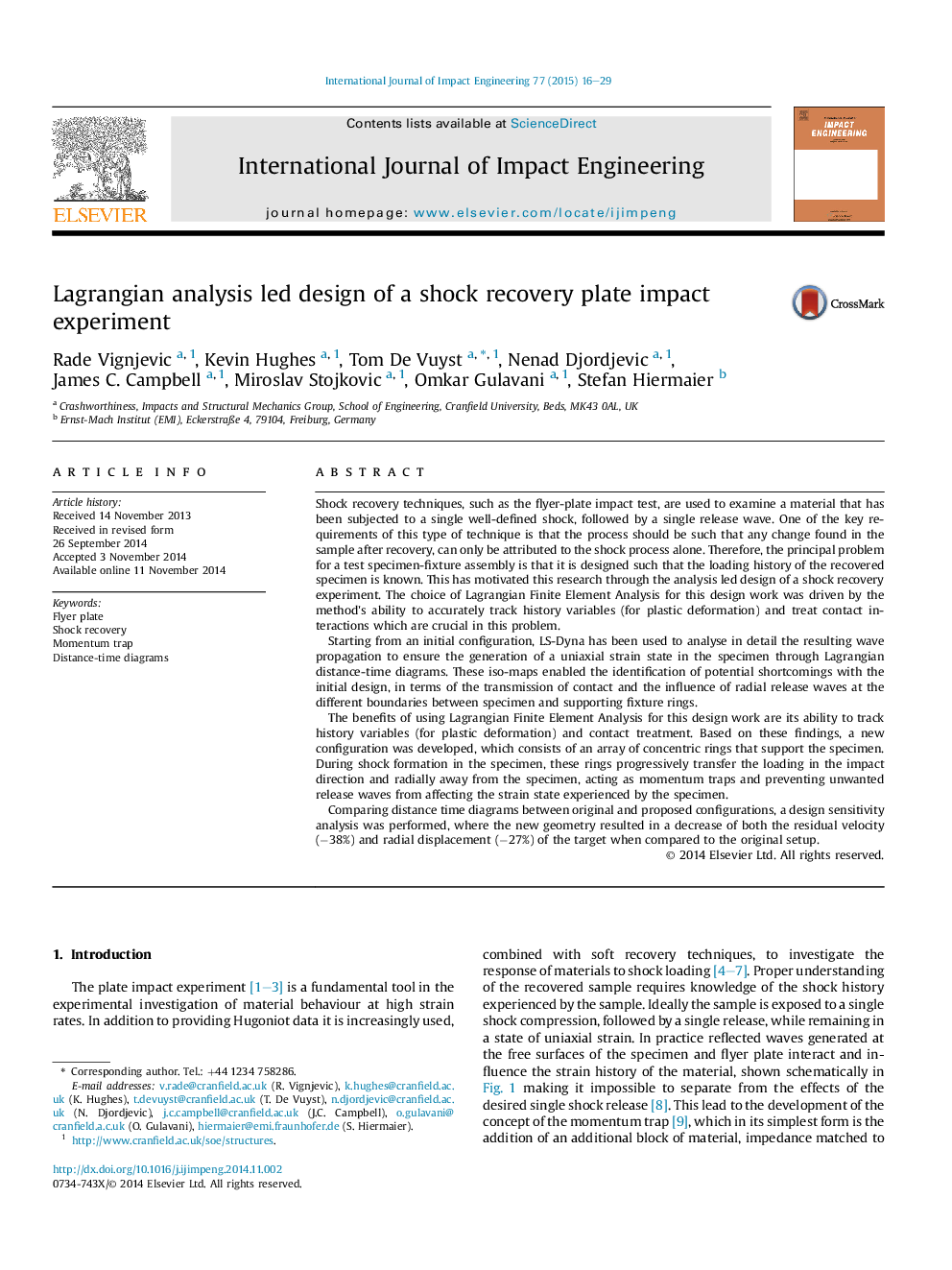| کد مقاله | کد نشریه | سال انتشار | مقاله انگلیسی | نسخه تمام متن |
|---|---|---|---|---|
| 779147 | 1464074 | 2015 | 14 صفحه PDF | دانلود رایگان |
• Review of shock recovery experiments.
• Application of Lagrangian FEA for treating contact interactions and constitutive shock response.
• Analysis led design of an plate impact shock recovery experiment using multiple momentum traps.
• Use of Lagrange distance-time diagrams for visualising shock wave propagation.
• Optimised design resulting in a low specimen residual velocity and radial displacement.
Shock recovery techniques, such as the flyer-plate impact test, are used to examine a material that has been subjected to a single well-defined shock, followed by a single release wave. One of the key requirements of this type of technique is that the process should be such that any change found in the sample after recovery, can only be attributed to the shock process alone. Therefore, the principal problem for a test specimen-fixture assembly is that it is designed such that the loading history of the recovered specimen is known. This has motivated this research through the analysis led design of a shock recovery experiment. The choice of Lagrangian Finite Element Analysis for this design work was driven by the method's ability to accurately track history variables (for plastic deformation) and treat contact interactions which are crucial in this problem.Starting from an initial configuration, LS-Dyna has been used to analyse in detail the resulting wave propagation to ensure the generation of a uniaxial strain state in the specimen through Lagrangian distance-time diagrams. These iso-maps enabled the identification of potential shortcomings with the initial design, in terms of the transmission of contact and the influence of radial release waves at the different boundaries between specimen and supporting fixture rings.The benefits of using Lagrangian Finite Element Analysis for this design work are its ability to track history variables (for plastic deformation) and contact treatment. Based on these findings, a new configuration was developed, which consists of an array of concentric rings that support the specimen. During shock formation in the specimen, these rings progressively transfer the loading in the impact direction and radially away from the specimen, acting as momentum traps and preventing unwanted release waves from affecting the strain state experienced by the specimen.Comparing distance time diagrams between original and proposed configurations, a design sensitivity analysis was performed, where the new geometry resulted in a decrease of both the residual velocity (−38%) and radial displacement (−27%) of the target when compared to the original setup.
Journal: International Journal of Impact Engineering - Volume 77, March 2015, Pages 16–29
